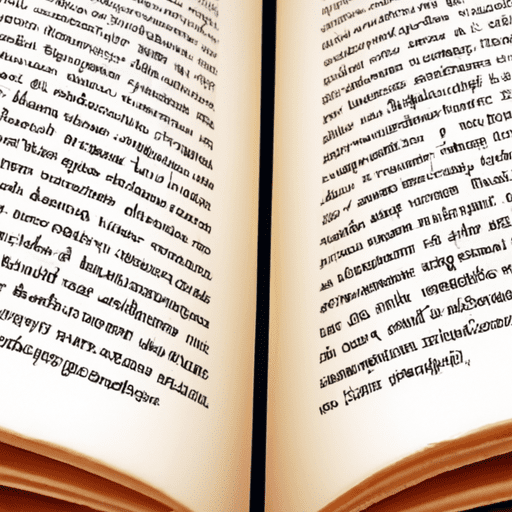Are you intrigued by the latest advancements in AI language models? Curious to know the distinctions between two prominent models? Enter ChatGPT and Bard, two powerful entities in the realm of conversational agents. While both possess exceptional language generation capabilities, they have unique characteristics that set them apart. In this article, we’ll explore the differences between ChatGPT and Bard, unveiling their distinctive traits and shedding light on which one may align more closely with your needs. So, buckle up and get ready to unravel the intriguing disparities between these AI powerhouses.
Scope and Purpose
ChatGPT
ChatGPT is an advanced language model developed by OpenAI. Its primary purpose is to generate human-like responses in a chatbot-like conversation with users. ChatGPT has been trained on a vast amount of data from the internet, allowing it to understand and respond to a wide variety of topics and questions. The scope of ChatGPT is focused on engaging in conversation and providing relevant and helpful responses.
Bard
Bard, also developed by OpenAI, is another impressive language model with a distinct purpose. Unlike ChatGPT, Bard is designed specifically for creative writing, storytelling, and generating narrative content. Its scope revolves around generating high-quality text, such as poems, stories, and scripts, with a focus on literary expression. Bard’s purpose is to assist users in enhancing their creative writing or even automate aspects of content creation.
Training Approach
ChatGPT
ChatGPT utilizes a method called Reinforcement Learning from Human Feedback (RLHF) for its training. Initially, human AI trainers engage in conversations and provide written responses as both the user and an AI assistant. These conversations, along with high-quality demonstrations from human AI trainers, form the dataset. Afterward, a reward model is created through comparison data, where two or more model-generated responses are ranked. Proximal Policy Optimization is used to fine-tune the model using this reward model, resulting in the final ChatGPT.
Bard
Unlike ChatGPT, which relies on supervised fine-tuning, Bard uses a method known as Reward Modeling with Proximal Policy Optimization. Initially, human AI trainers create a dataset of text passages in different writing styles. In this dataset, they imitate different prompts, allowing Bard to learn from their creative choices. Then, comparison data is collected by ranking multiple model responses according to quality. This data is used to create a reward model, which is used to further train Bard using Proximal Policy Optimization.


This image is property of images.unsplash.com.
Level of Generality
ChatGPT
ChatGPT aims to provide responses that are generally helpful across a wide range of topics and conversational contexts. It has been designed to be a multipurpose conversational agent that can engage in various discussions and answer user queries. While it may not have the expertise of a subject matter expert, it can still generate informative and coherent responses on a broad spectrum of topics.
Bard
Bard, on the other hand, is more specialized in generating creative and narrative content. It excels in generating text that is engaging, expressive, and artistic. Bard understands narrative elements such as character development, plot progression, and pacing, enabling it to craft compelling stories, poems, and other forms of creative writing. Its focus on creative expressions makes Bard less suitable for general conversational purposes.
System Architecture
ChatGPT
ChatGPT follows a sequence-to-sequence architecture. It takes user messages as input, processes them, and generates corresponding model-generated responses. The input messages are tokenized and transformed into a fixed-length representation vector using an encoder model. This representation vector is then decoded by the model to generate a response. The model generates text word by word, taking into account the context of the conversation.
Bard
Similar to ChatGPT, Bard also uses a sequence-to-sequence architecture. It takes a prompt or starting sentence as input and generates a coherent and creative piece of writing. Bard’s training process allows it to understand the context and generate text that follows the style and tone of the input prompt. Whether it’s a sonnet, a screenplay, or a short story, Bard has the capability to generate text in various literary forms.
This image is property of images.unsplash.com.
Dataset
ChatGPT
ChatGPT is trained on a large corpus of internet text, consisting of a diverse range of sources. The dataset includes articles, books, websites, and other publicly available text from the internet. The model has absorbed a vast amount of information from these sources, which allows it to generate well-informed responses on a wide array of topics.
Bard
Bard’s dataset includes extensive training from creative works, such as books, stories, poems, and screenplays. The dataset is designed to expose Bard to various writing styles, genres, and literary techniques. By training on a diverse range of creative content, Bard becomes capable of generating text that echoes different writing styles.
Language Skills
ChatGPT
ChatGPT exhibits a strong command of language skills. It can generate understandable and coherent responses, showcasing proficiency in syntax, grammar, and vocabulary. However, as with any language model, there can be instances where the generated responses may not be entirely accurate or contextually appropriate. ChatGPT is trained to mimic human-written text, aiming for natural and fluent dialogue.
Bard
Bard showcases remarkable language skills, particularly in creative writing. It generates text that often exhibits poetic elements, vivid descriptions, and a distinct literary flair. Bard’s training enables it to mimic diverse writing styles, demonstrating a deep understanding of literary devices, imagery, and narrative techniques. Its language skills are honed specifically for creative expressions.


This image is property of images.unsplash.com.
Prompting Instructions
ChatGPT
When interacting with ChatGPT, prompting instructions should be provided as clear and concise user messages. It is important to keep the initial prompt specific, so the model understands the desired direction of the conversation. Though ChatGPT can handle a variety of questions and instructions, being explicit with your requests leads to more accurate and relevant responses.
Bard
Bard’s prompting instructions should be formulated as a starting point or a creative prompt. It is helpful to provide details or specific instructions related to the desired form of writing, such as genre, style, or atmosphere. This allows Bard to generate text that aligns with the creative direction you have in mind.
Natural Language Instructions
ChatGPT
Interacting with ChatGPT is best done using natural language instructions. You can engage in a conversation as if you were chatting with a human. Asking questions, seeking advice, or requesting information in a natural and friendly manner leads to more engaging and contextually relevant responses. ChatGPT is designed to process and respond to conversational cues.
Bard
Bard should be instructed in a way that mimics communicating with a creative partner. Providing descriptive and imaginative instructions, as if explaining your desired creative output to another person, helps Bard generate text that aligns with your vision. Engage in a dialogue-like conversation with Bard, discussing writing elements, plot ideas, or even character attributes.


Evaluation Metrics
ChatGPT
The evaluation of ChatGPT’s performance involves assessing several key metrics. OpenAI considers metrics like response relevance, informativeness, and the ability to stay on topic. Evaluators also measure the model’s alignment with human values and its tendency to generate unbiased and respectful content. OpenAI actively seeks feedback and strives to improve ChatGPT based on user experiences and evaluation feedback.
Bard
Bard’s evaluation metrics focus on the quality, creativity, and coherence of the generated text. Evaluators assess the generated output based on criteria such as adherence to the provided prompt, stylistic consistency, storytelling elements, and overall literary merit. OpenAI values user feedback to better understand the strengths and weaknesses of Bard, aiming to refine its creative text generation abilities.
Research Implications and Applications
ChatGPT
ChatGPT’s research implications and applications are vast and diverse. It can serve as a helpful conversational assistant in customer service, virtual agents, and educational applications. With careful implementation and oversight, ChatGPT can augment human productivity, provide information, and even assist in language learning. Researchers can explore ways to make ChatGPT more useful, accurate, and trustworthy in various applications.
Bard
Bard’s applications are centered around creative writing and content generation. It can be an invaluable tool for authors, screenwriters, and other creative professionals, providing inspiration and assisting in the writing process. Bard’s ability to generate text in different styles and genres opens up possibilities for automated content creation, interactive storytelling, and even collaborative writing projects.
In conclusion, ChatGPT and Bard are two distinct language models developed by OpenAI, each with its own scope, purpose, and application. While ChatGPT shines in engaging conversations and providing helpful responses, Bard excels in generating creative and literary text. Understanding the differences between the two models allows users to leverage their capabilities effectively and make the most out of these advanced language models.


